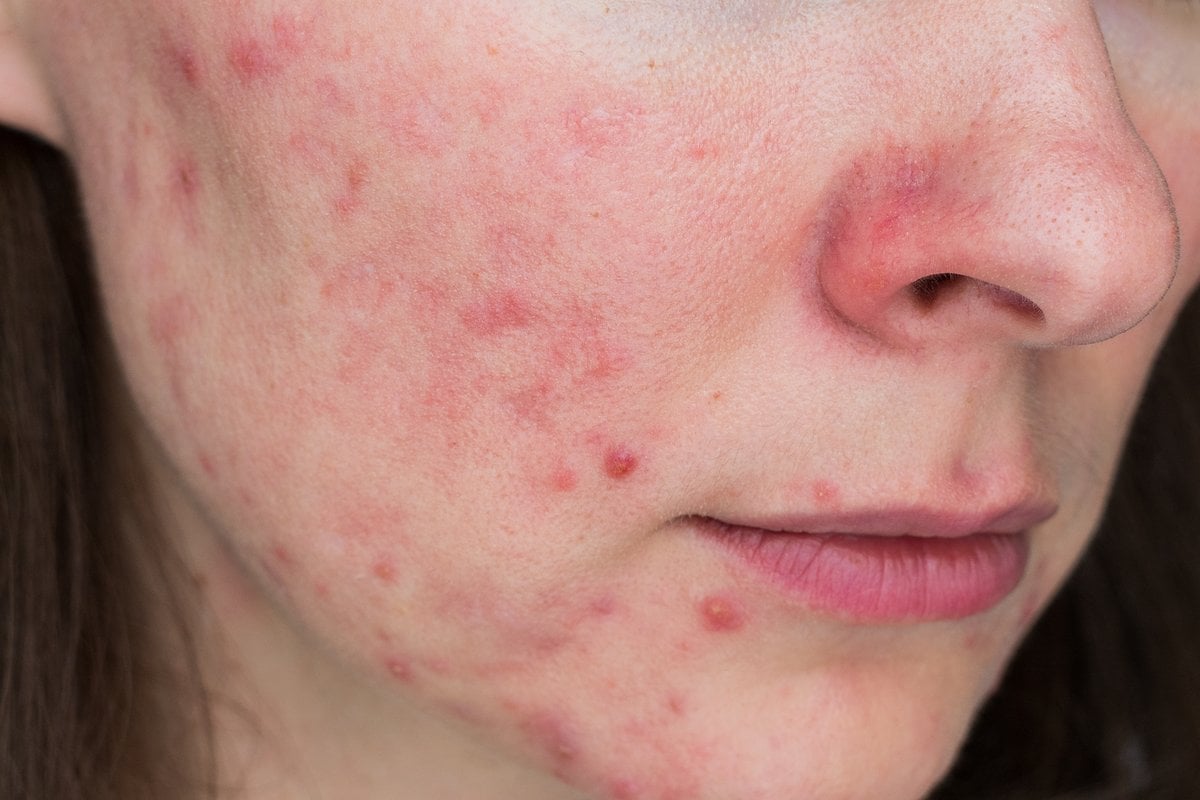
You start to break out. It gets bad. Spreads all over your chin. Around your mouth. You start to panic; is it just really bad acne? OH MY GOD IS IT FUNGAL ACNE?
No, wait - hang on.
Shouldn't you be using something else on this if it's ~fungal~? Is that drying lotion making it worse? Do you need to see a dermatologist? We're not freaking out, you're freaking out!
Watch: Here's how to treat blackheads as an adult. Post continues below.
So, you do what every other poor panic-ridden lamb does in 2021, and you scroll through Reddit's SkincareAddiction and hop on TikTok. Have a search for some answers.
And there's A LOT of stuff out there. Mercy. There's so many remedies.
But, guys, guys, guys. 'Fungal acne' isn't actually a real diagnosis. In fact, it's just a cute nickname for something else entirely different from acne. What's more, it usually appears on your body - not your face.
How awkward.
Confused? We asked a couple of experts to help us unpack the whole 'fungal acne' thing.
But first... Listen to Mamamia's podcast for your face, You Beauty, where we find out exactly how to get rid of blackheads. Post continues below.
Top Comments